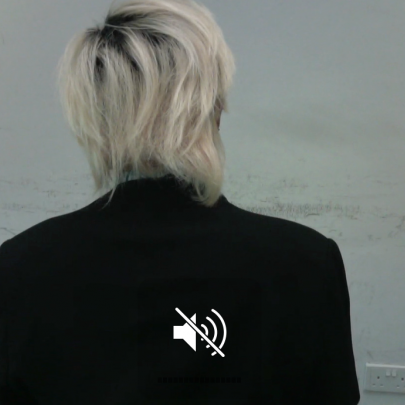
Jon Cates, GL1TCH.US (ongoing)
… the dirtiness implies there is a human quality in new media, that it is not perfect, it’s not sterile, it’s the dirtiness implies there is a human quality in new media, that it is not perfect, it’s not sterile, it’s not removed from real life, but it contains its imperfections, it’s impurities, in a way, it’s organic qualities, that get closer to our “wet” lives, rather than our binary ones. not removed from real life, but it contains its imperfections, it’s impurities, in a way, it’s organic qualities, that get closer to our “wet” lives, rather than our binary ones.
Randall Packer’s response to Jon Cates idea of “dirty new media” (via A Glitch Expectations: Conversation with Jon Cates)
Glitch fundamentally disrupt the otherwise peace and order. But to have technology is to have glitch. God created men to sin; otherwise jesus died for nothing. the celebration of glitch as an art form symbolises an awakening — a new beginning for digital natives in B.G. (Before Glitch). Now with wifi as the most basic need in Maslow’s hierarchy, it is an implied need for it does not have direct nutritions to a man’s existence. It is the broadening of a man’s consciousness, the internet as an extension to men’s brain in prosthetic knowledge.
Glitch as the underdog that subverts UX/UI design
The unnerving experience in Jon Cates’ aesthetics challenges the functionality of which but above all, one’s patience for navigation. Glitch art unsettles the audience. Much reflective of the anxiety from mismatched expectations and trolling computers. It is theatrical and overloads sensory perception, inducing a hypnotic trance; a mental state of new singularity. The transgression across content curation in glitch proves to be nostalgia-inducing. To speak of instinctual reflex from the glitch aesthetics suggests a journey in associative thoughts as connected points in the cloud of hippocampus.
Is glitched porn still porn?
In Dirty New Media, pornographic materials did not get any less sensual. Pornography by its heritage would very much prefer clarity and resolution boost in its media translation. If sheer is sexy, so is glitch. For sheer clothing evokes that sense of wonder and curious lust, glitch in its distortion inspires fantasy of a spotless mind. One perverse lucidly and iterates above satisfactory sexual scenes. Sex does not live purely on bits but engages a perfect union between virtuality and the viewer. It offers tantra from the digital realm.
Catharsis in glitch
In a non-intentional experimental spirit, I have experienced glitch first hand by crashing my iPhone 5c. Some might see brokenness as an opportunity for growth i.e. get an iPhone 6/6 plus. Some quizzed my blatant apathy to my now obsolete hardware. Others simply trolled and maybe give thanks to god for the new aesthetic.
To be broken is to be free. To acknowledge that security is elusive. And this takes time as much as the scalping of wound. Where certain glitches were not meant to be fixed, restoration comes from the faith of human’s mind detached from worldly extensions. Certain glitches are looked back in anger and disgust, whereas certain glitches merge into aesthetically pleasing forms. We decide which is burden or opportunistic growth.






